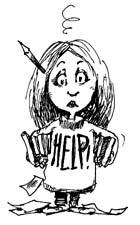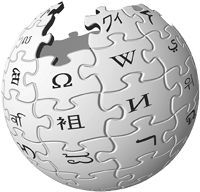Checking Parenthetical Documentation
(In-text Citation)

Properly formatting in-text citations is important, but citing all of the information that needs to be cited is even more important. The following chart explains what does and doesn’t need parenthetical documentation. Does it look familiar? You may recognize this chart from other lessons.
Deciding when to give credit
|
You Need to Give Credit in the Text in these Instances: |
|
|
You Don’t Need to Give Credit in the Text in these Instances: |
|
If you are still not confident about the differences between quoting, paraphrasing, and summarizing, refer to the lesson on “Summarizing, Paraphrasing, and Quoting Source Material Accurately.”
Now it’s time to practice differentiating what does and doesn’t need citation.
An effective way to evaluate your paper for documentation is to use highlighting to give yourself visual cues. This is easy to do on a computer, but it is also possible if you’ve written your paper by hand. In that case, make at least one copy of your paper and use highlighter pens to mark it. For this lesson, we’ll go through the entire process step-by-step using your computer.
STEP 1: Click on the sentences that you think contain direct quotations to highlight them. It doesn’t matter how short or long the direct quotations are.

(1) When given an assignment that calls for collecting information, many high school and college students turn to Wikipedia.(2) Because it is easily accessible online and has entries about everything from prehistoric animals to current rock bands, students consider it a major research tool. (3) Many educators, journalists, and other professionals, however, do not embrace this source that calls itself The Free Encyclopedia.(4) A former editor-in-chief of the Encyclopedia Britannica said that Wikipedia should not refer to itself as an encyclopedia because the word suggests “a level of authority and accountability.” (5) After all, how much authority can a source have if it can be edited by anyone at any time?(6) Journalist Andrew Orlowski also criticized Wikipedia’s calling itself an encyclopedia because that makes users think it is reliable, when in fact, it may not be.(7) For those and other reasons, some schools and universities will not accept the use of Wikipedia as a source in papers, and others say it is only worthwhile as a starting point for students to get ideas of where to look for more reliable information.
—excerpted from “Criticism of Wikipedia” at wikipedia.com
Sentence (4) contains a direct quotation, which must have an in-text citation.
As you highlight direct quotations in your own paper, check to be sure that you didn’t use any quotations that are not embedded in your writing. Use signal phrases and embed those direct quotations!
STEP 2: Click on the sentences that you think are either common knowledge or the author’s own ideas to highlight them.

(1) When given an assignment that calls for collecting information, many high school and college students turn to Wikipedia. (2) Because it is easily accessible online and has entries about everything from prehistoric animals to current rock bands, students consider it a major research tool.(3) Many educators, journalists, and other professionals, however, do not embrace this source that calls itself The Free Encyclopedia. (4) A former editor-in-chief of the Encyclopedia Britannica said that Wikipedia should not refer to itself as an encyclopedia because the word suggests “a level of authority and accountability.”(5) After all, how much authority can a source have if it can be edited by anyone at any time?(6) Journalist Andrew Orlowski also criticized Wikipedia’s calling itself an encyclopedia because that makes users think it is reliable, when in fact, it may not be.(7) For those and other reasons, some schools and universities will not accept the use of Wikipedia as a source in papers, and others say it is only worthwhile as a starting point for students to get ideas of where to look for more reliable information.
—excerpted from “Criticism of Wikipedia” at wikipedia.com
Sentences (1), (2), and (5) are the author’s own thoughts. Sentence (3) contains common knowledge, which does not need documentation.
STEP 3: If you’ve done the first two steps correctly, what’s left is either paraphrase or summary. Click on the remaining sentences to highlight them.

(1) When given an assignment that calls for collecting information, many high school and college students turn to Wikipedia.(2) Because it is easily accessible online and has entries about everything from prehistoric animals to current rock bands, students consider it a major research tool.(3) Many educators, journalists, and other professionals, however, do not embrace this source that calls itself The Free Encyclopedia.(4) A former editor-in-chief of the Encyclopedia Britannica said that Wikipedia should not refer to itself as an encyclopedia because the word suggests “a level of authority and accountability.”(5) After all, how much authority can a source have if it can be edited by anyone at any time? (6) Journalist Andrew Orlowski also criticized Wikipedia’s calling itself an encyclopedia because that makes users think it is reliable, when in fact, it may not be. (7) For those and other reasons, some schools and universities will not accept the use of Wikipedia as a source in papers, and others say it is only worthwhile as a starting point for students to get ideas of where to look for more reliable information.
—excerpted from “Criticism of Wikipedia” at wikipedia.com
Sentence (6) is an indirect quotation (paraphrase) and must have parenthetical documentation because it is not common knowledge. Sentence (7) is either a paraphrase or summary, but either way, it must also have an in-text citation because it is not common knowledge.
Notice that by looking at the highlighted paragraph, you can see if there are too many quotes or paraphrases and not enough of the essay writer’s own words. This is extremely helpful when examining your own writing when you have used outside sources.
Now let’s see what the paragraph looks like when parenthetical documentation is entered for sentences (4), (6), and (7).

When given an assignment that calls for collecting information, many high school and college students turn to Wikipedia. Because it is easily accessible online and has entries about everything from prehistoric animals to current rock bands, students consider it a major research tool. Many educators, journalists, and other professionals, however, do not embrace this source that calls itself The Free Encyclopedia. A former editor-in-chief of the Encyclopedia Britannica said that Wikipedia should not refer to itself as an encyclopedia because the word suggests “a level of authority and accountability” (Smith 42). After all, how much authority can a source have if it can be edited by anyone at any time? Journalist Andrew Orlowski also criticized Wikipedia’s calling itself an encyclopedia because that makes users think it is reliable, when in fact, it may not be (17). For those and other reasons, some schools and universities will not accept the use of Wikipedia as a source in papers, and others say it is only worthwhile as a starting point for students to get ideas of where to look for more reliable information (Hernandez).
—excerpted from “Criticism of Wikipedia” at wikipedia.com
For sentence (4), “(Smith 42)” is a proper in-text citation if the quoted words were on page 42 of a paginated source that Smith wrote. If the quote came from an online source or another type of source without page numbers, the parenthetical documentation would be “(Smith)”.
For sentence (6), “(17)” is proper parenthetical documentation if Orlowski, who is already mentioned in the sentence, said something like this on page 17 of a piece he wrote. If Orlowski’s writing was online or from a source without page numbers, his name in the sentence would serve as a citation.
For sentence (7), “(Hernandez)” is proper documentation if the sentence is a paraphrase of something Hernandez wrote online or in another kind of source without page numbers. However, if this sentence is a summary of a whole article or long piece, no matter what kind of source it is, Hernandez’s name would need to be in the sentence to serve as a citation. Summaries don’t have page numbers because many pages have been reduced to just a sentence or a few sentences that contain the main idea of the longer piece of writing.
Not documenting a paraphrase or summary is the most common example of unintentional plagiarism.
One more point: If both sentences (6) and (7) came from the same source, only one in-text citation would be needed to cover both sentences.
If you follow this strategy with your papers, it will be easy to zero in on your in-text citations and check them. Remember that if you need more information about parenthetical documentation, refer to the other lessons mentioned in the introduction, look at the MLA Handbook, or ask your teacher for assistance.
This checklist summarizes what you’ve learned so far about in-text citations. It doesn’t cover every possibility, of course, but it addresses the main issues.